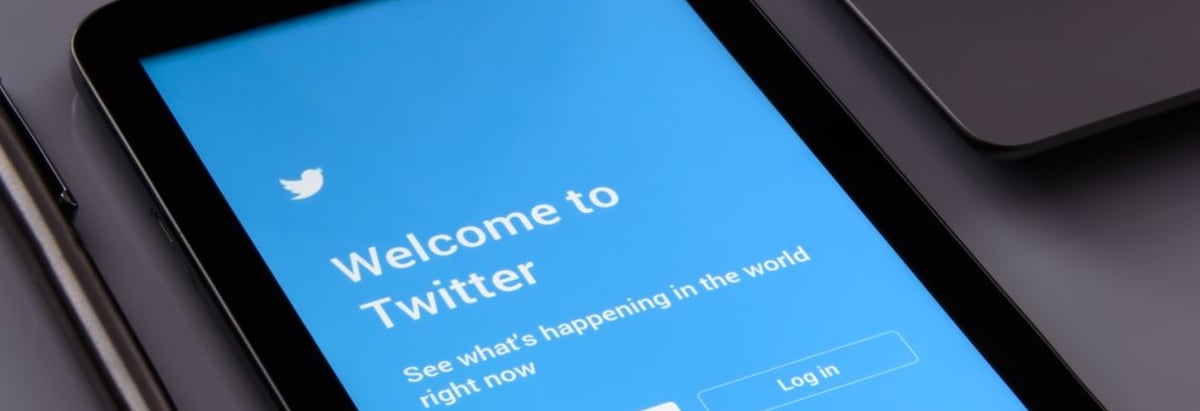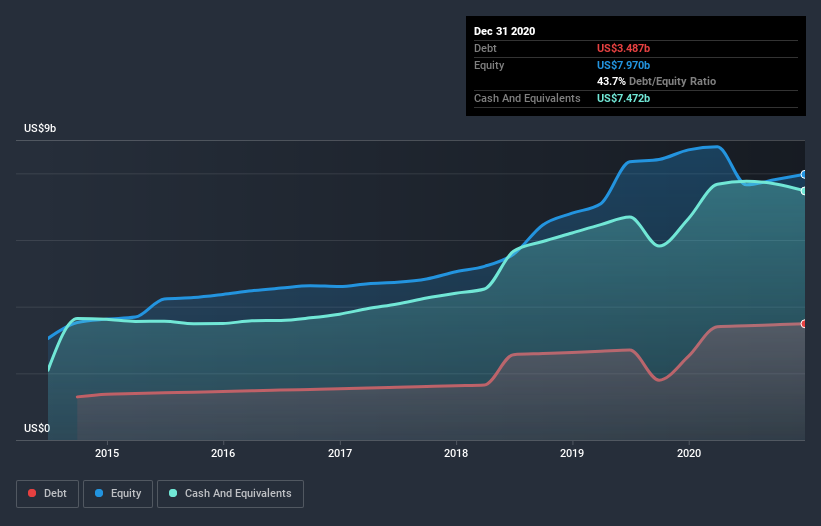- United States
- /
- Interactive Media and Services
- /
- NYSE:TWTR
We Think Twitter (NYSE:TWTR) Can Stay On Top Of Its Debt

Howard Marks put it nicely when he said that, rather than worrying about share price volatility, 'The possibility of permanent loss is the risk I worry about... and every practical investor I know worries about.' So it seems the smart money knows that debt - which is usually involved in bankruptcies - is a very important factor, when you assess how risky a company is. Importantly, Twitter, Inc. (NYSE:TWTR) does carry debt. But should shareholders be worried about its use of debt?
When Is Debt A Problem?
Debt is a tool to help businesses grow, but if a business is incapable of paying off its lenders, then it exists at their mercy. Part and parcel of capitalism is the process of 'creative destruction' where failed businesses are mercilessly liquidated by their bankers. While that is not too common, we often do see indebted companies permanently diluting shareholders because lenders force them to raise capital at a distressed price. Of course, the upside of debt is that it often represents cheap capital, especially when it replaces dilution in a company with the ability to reinvest at high rates of return. When we think about a company's use of debt, we first look at cash and debt together.
See our latest analysis for Twitter
How Much Debt Does Twitter Carry?
As you can see below, at the end of December 2020, Twitter had US$3.49b of debt, up from US$2.51b a year ago. Click the image for more detail. However, its balance sheet shows it holds US$7.47b in cash, so it actually has US$3.99b net cash.

How Healthy Is Twitter's Balance Sheet?
According to the last reported balance sheet, Twitter had liabilities of US$1.95b due within 12 months, and liabilities of US$3.46b due beyond 12 months. Offsetting this, it had US$7.47b in cash and US$1.04b in receivables that were due within 12 months. So it can boast US$3.11b more liquid assets than total liabilities.
This surplus suggests that Twitter has a conservative balance sheet, and could probably eliminate its debt without much difficulty. Simply put, the fact that Twitter has more cash than debt is arguably a good indication that it can manage its debt safely.
Shareholders should be aware that Twitter's EBIT was down 52% last year. If that earnings trend continues then paying off its debt will be about as easy as herding cats on to a roller coaster. When analysing debt levels, the balance sheet is the obvious place to start. But ultimately the future profitability of the business will decide if Twitter can strengthen its balance sheet over time. So if you want to see what the professionals think, you might find this free report on analyst profit forecasts to be interesting.
Finally, while the tax-man may adore accounting profits, lenders only accept cold hard cash. Twitter may have net cash on the balance sheet, but it is still interesting to look at how well the business converts its earnings before interest and tax (EBIT) to free cash flow, because that will influence both its need for, and its capacity to manage debt. Happily for any shareholders, Twitter actually produced more free cash flow than EBIT over the last three years. That sort of strong cash conversion gets us as excited as the crowd when the beat drops at a Daft Punk concert.
Summing up
While we empathize with investors who find debt concerning, you should keep in mind that Twitter has net cash of US$3.99b, as well as more liquid assets than liabilities. And it impressed us with free cash flow of US$120m, being 175% of its EBIT. So we are not troubled with Twitter's debt use. When analysing debt levels, the balance sheet is the obvious place to start. However, not all investment risk resides within the balance sheet - far from it. These risks can be hard to spot. Every company has them, and we've spotted 2 warning signs for Twitter you should know about.
If you're interested in investing in businesses that can grow profits without the burden of debt, then check out this free list of growing businesses that have net cash on the balance sheet.
If you decide to trade Twitter, use the lowest-cost* platform that is rated #1 Overall by Barron’s, Interactive Brokers. Trade stocks, options, futures, forex, bonds and funds on 135 markets, all from a single integrated account. Promoted
Valuation is complex, but we're here to simplify it.
Discover if Twitter might be undervalued or overvalued with our detailed analysis, featuring fair value estimates, potential risks, dividends, insider trades, and its financial condition.
Access Free AnalysisThis article by Simply Wall St is general in nature. It does not constitute a recommendation to buy or sell any stock, and does not take account of your objectives, or your financial situation. We aim to bring you long-term focused analysis driven by fundamental data. Note that our analysis may not factor in the latest price-sensitive company announcements or qualitative material. Simply Wall St has no position in any stocks mentioned.
*Interactive Brokers Rated Lowest Cost Broker by StockBrokers.com Annual Online Review 2020
Have feedback on this article? Concerned about the content? Get in touch with us directly. Alternatively, email editorial-team (at) simplywallst.com.
About NYSE:TWTR
Twitter, Inc. operates as a platform for public self-expression and conversation in real-time.
Mediocre balance sheet and slightly overvalued.
Similar Companies
Market Insights
Community Narratives



